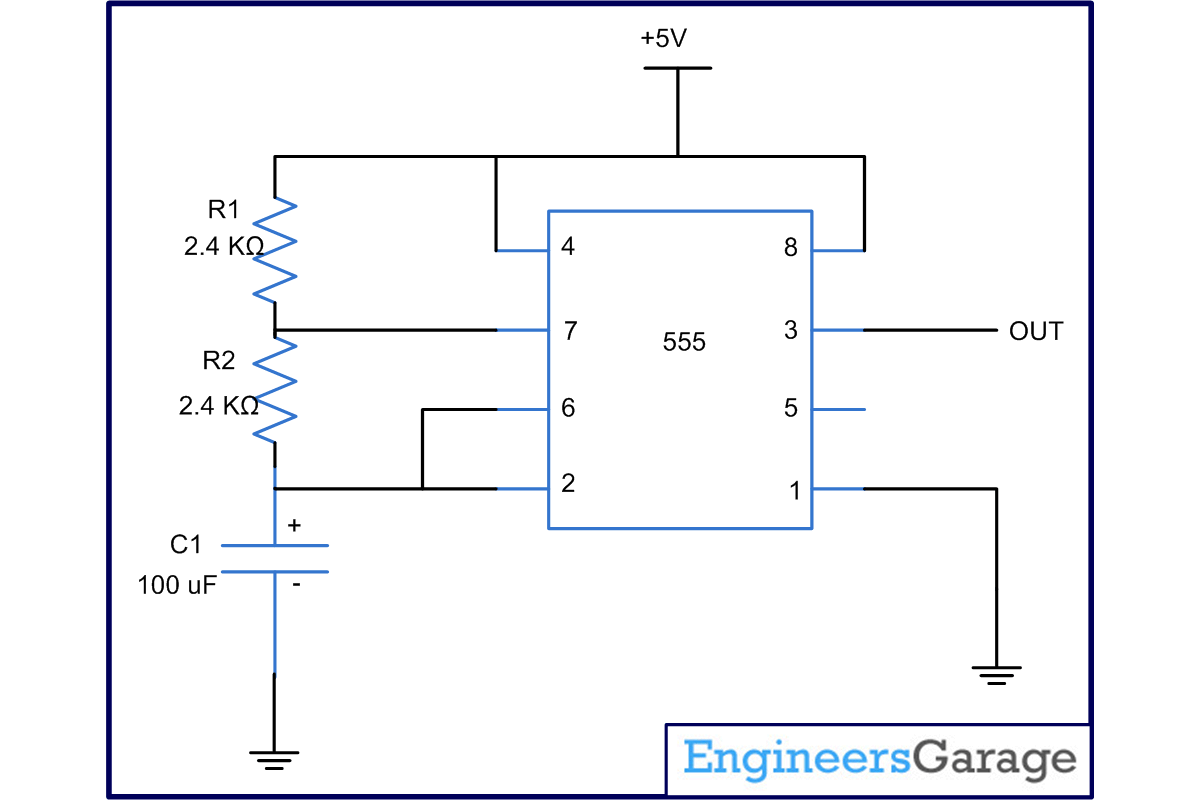This circuit based project demonstrates the working of 555 timer in astable mode to generate pulses of time period 0.5 second. This pulse can be further used for anything where we need a pulse such as to blink a LED or to create fashionable blinking lights. Image below shows internal circuitry of NE 555 timer which can be used in astable and monostable mode:
[[wysiwyg_imageupload:7747:]]
Fig. 1: Prototype for Internal circuitry of NE 555 timer Circuit on Breadboard
This circuit of this project makes the use of timer IC NE555 which produces a constant square pulse of a desired frequency. This pulse could be either triggered or could be produced continuously depending upon the mode of 555 we are using. The two mostly used modes of 555 are Monostable and Astable. Here it is used in the astable mode with time period of half second, with high time period of 0.333 seconds and low time period of 0.166 seconds.
Circuit Diagrams
Project Components
Filed Under: 555 Timers, Electronic Projects



Questions related to this article?
👉Ask and discuss on EDAboard.com and Electro-Tech-Online.com forums.
Tell Us What You Think!!
You must be logged in to post a comment.